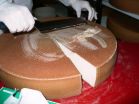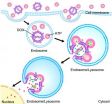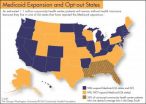(Press-News.org) The rind is the boundary layer between a cheese and its environment. It hosts a variety of microorganisms that comprise the microbiome: a symbiotic community whose members perform different tasks. Some break down proteins and fats on the rind, for example, creating volatile sulphur and ammonia compounds that are responsible for the intensive odour of some types of cheese.
There are different curing methods for cheese. Some, like Limburger, Tilsiter and Appenzeller, need specific bacteria on their rinds. Others, like Camembert and Brie, develop their aroma with the assistance of moulds.
Vorarlberger Bergkäse - a model cheese
Vorarlberger Bergkäse is a regional speciality. Tons are produced every year, and similar varieties are made in the Tirol Alps and the Bavarian region of Allgäu. "In France, research into the microorganisms found on cheese is very advanced. Yet until now, the microbiome on Vorarlberger Bergkäse and other similar cheeses had hardly been investigated at all", explains study director Stephan Schmitz-Esser.
Collecting cheese in the name of science
Microbiologist Schmitz-Esser and lead author Elisa Schornsteiner worked with colleagues from the Agricultural Chamber of Vorarlberg to gather samples from three different Vorarlberger cheese dairies. Schornsteiner collected 25 to 30 rind samples from cheese wheels at different curing stages from very young to well-aged. Then the scientists ran detailed genetic analyses on the rinds to identify the strains of bacteria and yeast living on them.
"Marine bacteria" with an unknown role discovered on rind
For the first time, these genetic analyses have revealed the entire spectrum of microorganisms that inhabit Vorarlberger Bergkäse. One find interested experts in particular: The Halomonas bacteria, a halophillic microbe probably originating from the sea, was the most common microorganism on the cheese and especially prevalent on young cheese rinds. Since the salt concentration on a cheese rind drops during the ripening process, researchers found older rinds hosted correspondingly fewer Halomonas. The exact role the microorganism plays in the cheese-making process is currently unknown and will be the subject of additional studies. The importance of the yeasts found on the cheese rinds is also still unclear and requires further investigation.
The microbiome's role in cheese making
Microorganisms on cheese not only preserve the final product and make it aromatic and delicious; they are also very important for food safety. Many of the bacteria on the rind prevent the spread of potentially dangerous pathogens by excreting inhibitors against other bacteria, such as listeria.
"Understanding exactly which microorganisms are on the rinds and the role each plays in the complex community is the subject of our research", explains Schmitz-Esser. "This will allow us to help cheese dairies make safe, tasty cheeses".
INFORMATION:
The article "Cultivation-independent analysis of microbial communities on Austrian raw milk hard cheese rinds" by Elisa Schornsteiner, Evelyne Mann, Othmar Bereuter, Martin Wagner and Stephan Schmitz-Esser was published in the International Journal of Food Microbiology. http://dx.doi.org/10.1016/j.ijfoodmicro.2014.04.010
About the University of Veterinary Medicine, Vienna
The University of Veterinary Medicine, Vienna in Austria is one of the leading academic and research institutions in the field of Veterinary Sciences in Europe. About 1,200 employees and 2,300 students work on the campus in the north of Vienna which also houses five university clinics and various research sites. Outside of Vienna the university operates Teaching and Research Farms. http://www.vetmeduni.ac.at
Scientific Contact:
Dr. Stephan Schmitz-Esser
Institute of Milk Hygiene, Milk Technology and Food Science
University of Veterinary Medicine Vienna (Vetmeduni Vienna)
T +43 1 25077-3510
stephan.schmitz-esser@vetmeduni.ac.at
Released by:
Susanna Kautschitsch
Science Communication / Public Relations
University of Veterinary Medicine Vienna (Vetmeduni Vienna)
T +43 1 25077-1153
susanna.kautschitsch@vetmeduni.ac.at
Life on cheese
Scientists explore the cheese rind microbiome
2014-05-09
ELSE PRESS RELEASES FROM THIS DATE:
New method sneaks drugs into cancer cells before triggering release
2014-05-09
Biomedical engineering researchers have developed an anti-cancer drug delivery method that essentially smuggles the drug into a cancer cell before triggering its release. The method can be likened to keeping a cancer-killing bomb and its detonator separate until they are inside a cancer cell, where they then combine to destroy the cell.
"This is an efficient, fast-acting way of delivering drugs to cancer cells and triggering cell death," says Dr. Ran Mo, lead author of a paper on the work and a postdoctoral researcher in the joint biomedical engineering program at North ...
Nation's data capital poised to advance leadership position in big data
2014-05-09
WASHINGTON—The Northern Virginia Technology Council (NVTC), the George Washington University (GW), and Attain, LLC, today released a research report conducted by Chmura Economics & Analytics highlighting the depth and breadth of big data experience, expertise and assets in Northern Virginia and the Potomac region.
The report "Big Data and Analytics in Northern Virginia and the Potomac Region" concludes that the area—dubbed the nation's data capital—is a natural leader in the evolving field of big data and analytics. With a concentration of data analytics businesses and ...
Long-term childhood poverty contributes to young adult obesity rates
2014-05-09
A new study from the University of Houston Department of Health and Human Performance (HHP) finds childhood poverty reaches into the lives of white, Hispanic and African-American young adult women, contributing to their propensity to be overweight and obese.
"We know that having a low socioeconomic status during childhood contributes to children being overweight or obese," said HHP's Daphne Hernandez, who also is an executive board member of the UH Texas Obesity Research Center. "We've found a connection between the long-term exposure to poverty during childhood and ...
Forty is not too old or too late to start endurance training
2014-05-09
Amsterdam, 9 May. A study of healthy senior men has found that "relatively intensive" endurance exercise confers benefits on the heart irrespective of the age at which they began training.(1) The benefits were evident and comparable in those who had started training before the age of 30 or after the age of 40. As a result, said the investigators, 40 is not too old to start endurance training.
The study, which was performed in France, was reported today at the EuroPRevent congress 2014 in Amsterdam by David Matelot, from the Inserm 1099 unit in Rennes, France.
The study ...
Salt needed: Tolerance lessons from a dead sea fungus
2014-05-09
Despite its name, the Dead Sea does support life, and not just in the sense of helping visitors float in its waters. Algae, bacteria, and fungi make up the limited number of species that can tolerate the extremely salty environment at the lowest point on Earth.
Some organisms thrive in salty environments by lying dormant when salt concentrations are very high. Other organisms need salt to grow. To learn which survival strategy the filamentous fungus Eurotium rubrum uses, a team of researchers led by Eviatar Nevo from the University of Haifa in Israel, Igor Grigoriev ...
States opting out of Medicaid leave 1.1 million community health center patients without health insurance
2014-05-09
WASHINGTON, DC and NEW YORK (May 9, 2014)— An estimated 1.1 million community health center patients are left without the benefits of health coverage simply because they live in one of 24 states that have opted out of the Medicaid expansion, a key part of the Affordable Care Act (ACA), according to a new report.
The research, by the Geiger Gibson/RCHN Community Health Foundation Research Collaborative at Milken Institute School of Public Health (Milken Institute SPH) at the George Washington University also shows that the vast majority (71 percent) of the 1.1 million ...
Implantable device to beat high blood pressure
2014-05-09
An implantable device that reduces blood pressure by sending electrical signals to the brain has been created by a group of researchers in Germany.
The device has successfully reduced the blood pressure in rats by 40 per cent without any major side effects, and could offer hope for a significant proportion of patients worldwide who do not respond to existing medical treatment for the condition.
The first results have been published today, 9 May, in IOP Publishing's Journal of Neural Engineering.
The device consists of 24 individual electrodes that are integrated into ...
Study shows short bursts of intense exercise before meals control blood sugar better than 1 continuous 30 minute session
2014-05-09
New research published in Diabetologia (the journal of the European Association for the Study of Diabetes) indicates that brief bursts of intense exercise before meals (termed exercise 'snacking' by the study authors) helps control blood sugar in people with insulin resistance more effectively than one daily 30-minute session of moderate exercise. The research was conducted by exercise science and medicine researchers, including Monique Francois and Associate Professor James Cotter from the University of Otago, Dunedin, New Zealand.
The study used a cross-over design, ...
From age 30 onwards, inactivity has greatest impact on women's lifetime heart disease risk
2014-05-09
From the age of 30 onwards, physical inactivity exerts a greater impact on a woman's lifetime risk of developing heart disease than the other well-known risk factors, suggests research published online in the British Journal of Sports Medicine.
This includes overweight, the finding show, prompting the researchers to suggest that greater effort needs to be made to promote exercise.
The researchers wanted to quantify the changing contribution made to a woman's likelihood of developing heart disease across her lifetime for each of the known top four risk factors in Australia: ...
Frequent arguments with family and friends linked to doubling in death risk in middle age
2014-05-09
Frequent arguments with partners, relatives, or neighbours may boost the risk of death from any cause in middle age, suggests research published online in the Journal of Epidemiology & Community Health.
Men and those not in work seemed to be the most vulnerable, the findings indicate.
The evidence suggests that supportive social networks and strong relationships are good for general health and wellbeing, but the authors wanted to find out if the stressors inherent in family relationships and friendships had any impact on the risk of death from any cause.
They therefore ...
LAST 30 PRESS RELEASES:
Air pollution exposure and birth weight
Obstructive sleep apnea risk and mental health conditions among older adults
How talking slows eye movements behind the wheel
The Ceramic Society of Japan’s Oxoate Ceramics Research Association launches new international book project
Heart-brain connection: international study reveals the role of the vagus nerve in keeping the heart young
Researchers identify Rb1 as a predictive biomarker for a new therapeutic strategy in some breast cancers
Survey reveals ethical gaps slowing AI adoption in pediatric surgery
Stimulant ADHD medications work differently than thought
AI overestimates how smart people are, according to HSE economists
HSE researchers create genome-wide map of quadruplexes
Scientists boost cell "powerhouses" to burn more calories
Automatic label checking: The missing step in making reliable medical AI
Low daily alcohol intake linked to 50% heightened mouth cancer risk in India
American Meteorological Society announces Rick Spinrad as 2026 President-Elect
Biomass-based carbon capture spotlighted in newly released global climate webinar recording
Illuminating invisible nano pollutants: advanced bioimaging tracks the full journey of emerging nanoscale contaminants in living systems
How does age affect recovery from spinal cord injury?
Novel AI tool offers prognosis for patients with head and neck cancer
Fathers’ microplastic exposure tied to their children’s metabolic problems
Research validates laboratory model for studying high-grade serous ovarian cancer
SIR 2026 delivers transformative breakthroughs in minimally invasive medicine to improve patient care
Stem Cell Reports most downloaded papers of 2025 highlight the breadth and impact of stem cell research
Oxford-led study estimates NHS spends around 3% of its primary and secondary care budget on the health impacts of heat and cold in England
A researcher’s long quest leads to a smart composite breakthrough
Urban wild bees act as “microbial sensors” of city health.
New study finds where you live affects recovery after a hip fracture
Forecasting the impact of fully automated vehicle adoption on US road traffic injuries
Alcohol-related hospitalizations from 2016 to 2022
Semaglutide and hospitalizations in patients with obesity and established cardiovascular disease
Researchers ‘listen in’ to embryo-mother interactions during implantation using a culture system replicating the womb lining
[Press-News.org] Life on cheeseScientists explore the cheese rind microbiome




